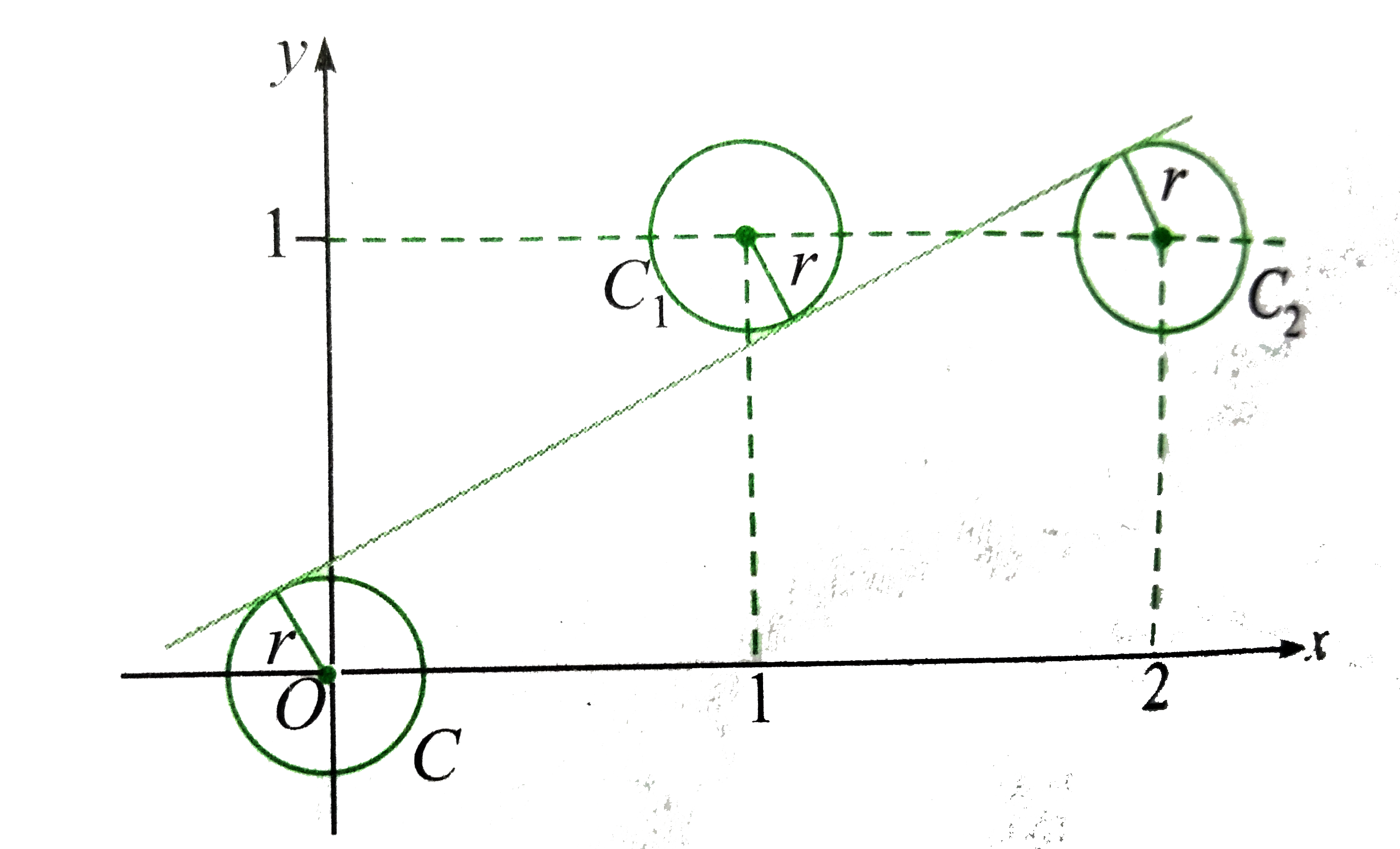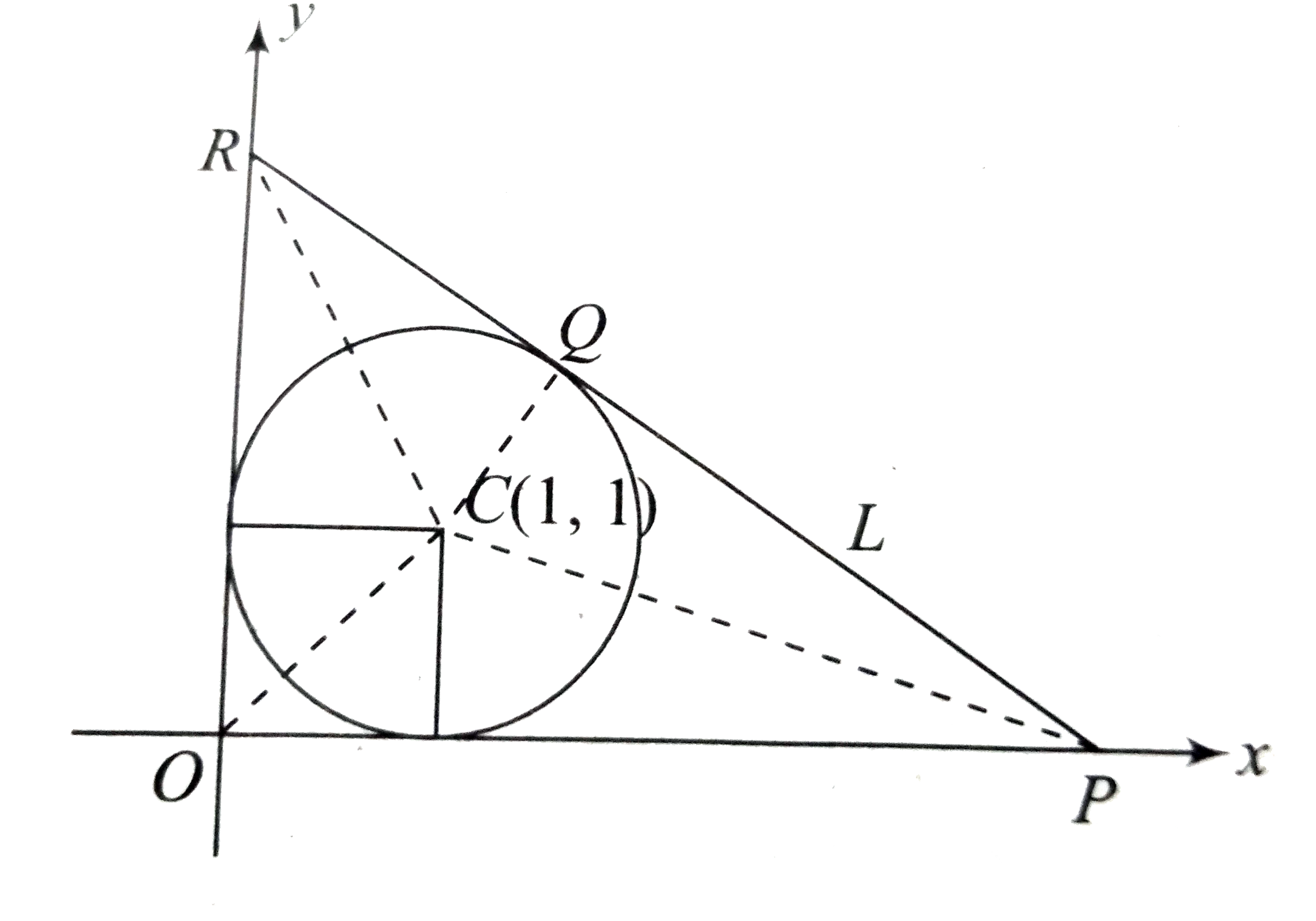about to only mathematics
The correct Answer is:5

The equation of the line joining the origin and the center of circle C2,(2,1) , is
y=x2
or x−2y=0
Let the equation of common tangent be
x−2y+c=0 (1)
∴ Perpendicular distance from (0,0) on this line
= Perpendicular distance from (1,1)
or ∣∣∣c√5∣∣∣=∣∣∣c−1√5∣∣∣
or c=1−c or c=12
The equation of common tangent is
x−2y+12=0 or 2x−4y+1=0 (2)
The length of perpendicular from (2,1) on the line (2) is
r=∣∣∣4−4+1√20∣∣∣=12√5=√510
Topper's Solved these Questions
- CIRCLE BOOK - CENGAGE ENGLISHCHAPTER - CIRCLE EXERCISE - ARCHIVES (JEE MAIN)
1 Video
- CIRCLE BOOK - CENGAGE ENGLISHCHAPTER - CIRCLE EXERCISE - Single Correct Answer Type
9 Videos
- CIRCLE BOOK - CENGAGE ENGLISHCHAPTER - CIRCLE EXERCISE - For Problems
43 Videos
- BINOMIAL THEOREMBOOK - CENGAGE ENGLISHCHAPTER - BINOMIAL THEOREMEXERCISE - Matrix
4 Videos
- CIRCLESBOOK - CENGAGE ENGLISHCHAPTER - CIRCLESEXERCISE - Comprehension Type
8 Videos
Similar Questions
If P and Q are the points of intersection of the circles x2+y2+3x+7y+2p=0 and x2+y2+2x+2y−p2=0 then there is a circle passing through P,Q and (1,1) for
View SolutionThree distinct points A, B and C are given in the 2aedimensional coordinate plane such that the ratio of the distance of any one of them from the point (1, 0) to the distance from the point (–1, 0) is equal to 13.Then the circumcentre of the triangle ABC is at the point :
View SolutionTangents PA and PB are drawn to the circle (x−4)2+(y−5)2=4 from the point P on the curvey=sinx , where A and B lie on the circle. Consider the function y=f(x) represented by the locus of the center of the circumcircle of triangle PAB. Then answer the following questions.
Which of the following is true ?
View SolutionConsider set A={T(r+1)=.nCr(3)n−r(5x)r,r=0,1,23,…..,n}. Match the following lists :

View Solution
In the diagram as shown, a circle is drawn with centre C(1,1) and radius 1 and a line L. The line L is tangent to the circle at Q. Further L meets the y-axis at R and the x-axis at P in such a way that the angle OPQ equals θ where 0<θ<π2.
Area of triangle OPR when θ=π/4 is
View SolutionWhat did Schimba say about mathematics?
View SolutionWhich of the following statements is not true about 'mapping in Mathematics?
View Solutionabout to only mathematics
View Solutionabout to only mathematics
View Solutionabout to only mathematics
View Solutionabout to only mathematics
View Solutionabout to only mathematics
View Solutionabout to only mathematics
View Solutionabout to only mathematics
View Solutionabout to only mathematics
View Solutionabout to only mathematics
View Solution

